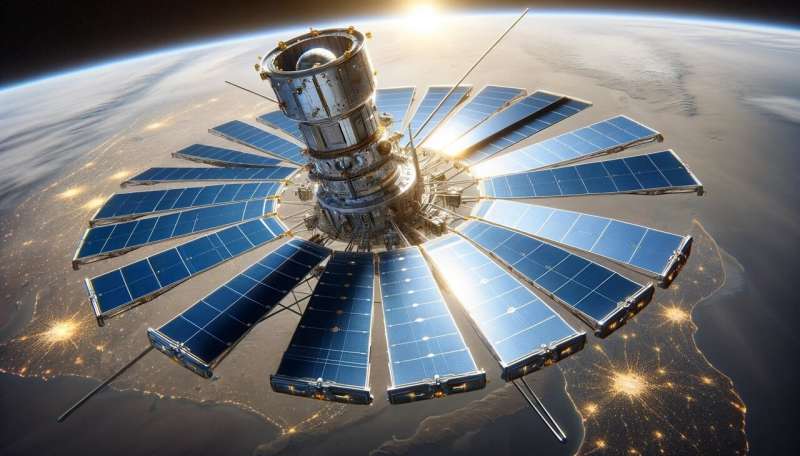
Space-based solar power (SBSP) has been in the news recently, with the successful test of a solar power demonstrator in space taking place last summer. While the concept is fundamentally sound, there are plenty of hurdles to overcome if the technology is to be widely adopted—not the least of which is cost.
NASA is no stranger to costly projects, though, and they recently commissioned a study from their internal Office of Technology, Policy, and Strategy that suggests how NASA could continue to support this budding idea. Most interestingly, if the technological cards are played right, SBSP could be the most carbon-efficient, lowest-cost power source for humanity by 2050.
To be clear, there are a lot of hurdles to overcome to get to that point, but first, let's start with what the report looked at. Its primary concern was two-fold—how expensive the electricity from a power satellite is and how high its lifecycle carbon emissions are, including those introduced to the atmosphere to get it into space in the first place.
Those two data points were analyzed for two different systems, one modular one called the SPS-Alpha Mark-III suggested by prolific inventor John Mankins, which is a little more theoretical, and another by a group of Japanese researchers called the Tethered-SPS that uses a more traditional design. In most of the calculations the report provides, the SPS-Alpha Mark-III outperforms the more conventional system.
Still, there are some technical hurdles to its implementation—though nothing so complicated as some of the others discussed therein.
The results report presents are not pretty for SBSP. Given their current levels of technical maturity, both solutions produce electricity that is more expensive than any existing technology. Not only that, even the more climate-friendly SPS-Alpha Mark-III is still comparable only to solar power in terms of climate impact and is beaten out by things like hydropower or even nuclear fission. So, some work needs to happen before there is any commercial incentive to adopt this technology.
Let's tackle cost first—two big sources are the cost of getting the satellite into orbit and maintaining it when it's up there, known as in-space assembly and maintenance (ISAM). The report even provides some allowances for the launch cost to be lower than it currently is (without fully functional Starships). But even with that lower cost, 863 launches to geosynchronous orbit for the smaller of the two systems will likely not allow any system to be cost-competitive with terrestrial alternatives.
Also, as of right now, no ISAM infrastructure could support such a massive satellite. So if any part of the system fails while in space, which, given the nature of the environment, is inevitable, there wouldn't be any feasible way to fix it. Like lowering launch costs, this, too, is being worked on by several commercial entities. However, the inability to maintain infrastructure in orbit inexpensively will plague cost assessments of any large project in the near future.
As for greenhouse emissions—most of those are caused by the launches required to get into space. There haven't been a lot of studies done on the effects of emitting combustion products into the high atmosphere, especially in terms of their impact on the environment. But it wouldn't be surprising if that wasn't good.
Citation: New NASA report suggests we could see space-based power after 2050 (2024, February 19) retrieved 19 February 2024 from https://techxplore.com/news/2024-02-nasa-space-based-power.html
This document is subject to copyright. Apart from any fair dealing for the purpose of private study or research, no part may be reproduced without the written permission. The content is provided for information purposes only.
